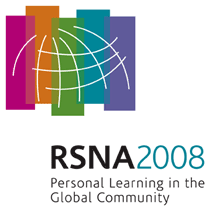
Abstract Archives of the RSNA, 2008
Silvia Delsanto PhD, Presenter: Employee, im3D SpA
Lia Morra PhD, Abstract Co-Author: Employee, im3D SpA, Italy
Loredana Correale PhD, Abstract Co-Author: Researcher, im3D SpA, Turin, Italy
Delia Campanella MD, Abstract Co-Author: Nothing to Disclose
Piergiorgio Boda MS, Abstract Co-Author: Employee, im3D SpA
Daniele Regge MD, Abstract Co-Author: Research Consultant, im3D SpA
A high level of expertise in CT colonography reading is crucial in order to achieve an adequate sensitivity. We present a system for the training of the radiologist, requiring only the presence of pre-diagnosed cases, which are easily available in any hospital center.
On the hypothesis that for an effective training cases must be presented based on their difficulty, a classification of cases is necessary. In order to perform this assessment, a radiological evaluation of the diagnostic difficulty of each lesion and a predetermined set of rules were combined to generate a score.
These rules were obtained on the basis of the results of the IMPACT trial. After the trial, two radiologists working in consensus re-examined all the cases, reconsidering both the optical colonoscopy exams and the prospective reading. For each lesion, a degree of confidence expressing the difficulty of the diagnosis was specified by both readers. These data, together with several objective features of the examined cases, and the information provided by the CAD system (im3D CAD-COLON, Torino, Italy) were analyzed to extract the set of rules best suited for the classification.
The system was evaluated on a set of 45 cases with cathartic preparation, retrospectively presented to 5 different experienced readers. The difficulty score was related to the overall radiological sensitivity (i.e. the number of radiologists who correctly detected the lesions present in the case).
The extracted set of rules included lesion size, lesion visibility on both scans, and the number of false positives presented by the CAD system. The three-level score was predictive of the overall sensitivity of the case, with cases judged as difficult by the system always corresponding to a miss by at least one of the 5 radiologists
We here present a training system for CT colonography reading, capable of exploiting the wealth of experience stored in each center database. The presented system thus allows a self-tuition of less experienced readers, potentially providing a more cost-effective solution to training.
Radiologist experience level is a known critical issue in CT Colonography. A self-training methodology is here proposed, which may constitute a cost-effective alternative to double reading.
Delsanto, S,
Morra, L,
Correale, L,
Campanella, D,
Boda, P,
Regge, D,
A Computer Assisted Self-Tuition System for CT Colonography Reading. Radiological Society of North America 2008 Scientific Assembly and Annual Meeting, February 18 - February 20, 2008 ,Chicago IL.
http://archive.rsna.org/2008/6021895.html

